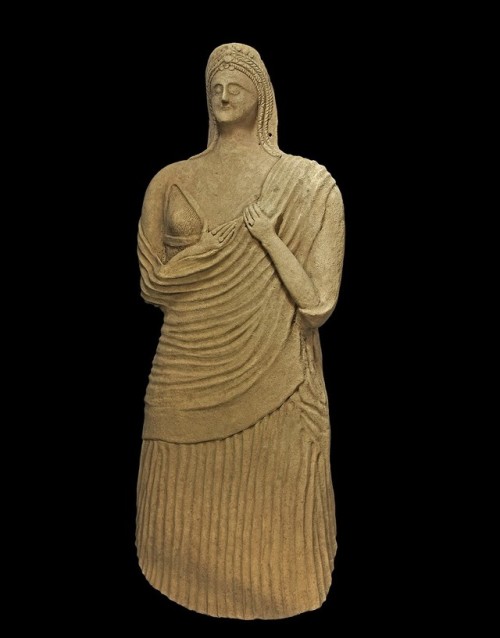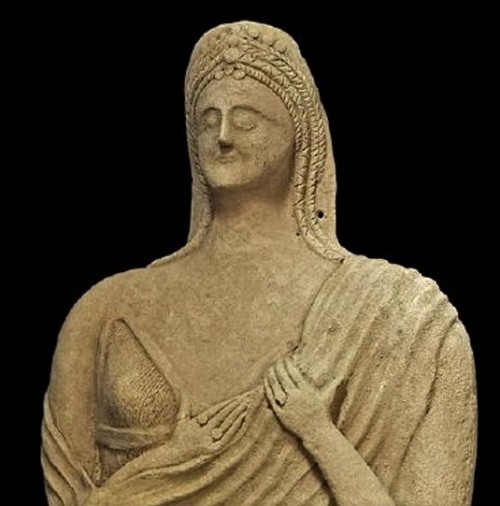Greek Terracotta Standing Kore, 6th-5th Century BCA hollow-formed terracotta kore with modeling to t
Greek Terracotta Standing Kore, 6th-5th Century BCA hollow-formed terracotta kore with modeling to the front and sides, wearing a draped robe with pleated lower section and fold across the chest and left shoulder; ribbed and banded undergarment to the chest; elaborate braided hairstyle with pellets, finely modeled face with piercings beside the neck; hands raised to the left breast with three finger rings. 23 kg, 105cm (41 ¼")The piece displays styles of Eastern Greek workmanship, possibly from one of the Greek islands, Cyprus, or one of the Greek colonies such as Cyrenaica, and is that of a kore (pl. korai), the name given to a type of free-standing ancient Greek sculpture of the Archaic period depicting female figures, always of a young age. They show the restrained “archaic smile”, but, unlike the nude male kouroi, the korai are depicted in thick drapery, ornate, and in painted examples very colorful. They often have elaborate braided hairstyles. There are a number of theories as to whom they represent with the most popular being that of the goddess Persephone as some are shown holding a pomegranate, a fruit associated with the goddess of the Eleusinian Mysteries. Another theory is that they represent images of wealthy patrons and were set up in temples as offerings to the gods and to be a constant presence before the deity. Korai are found in most of the ancient cities of the Greek world, with the most famous being those from the Acropolis in Athens. Although they show a similarity in form with the arms either by the side or held up and holding a votive offering, the clothes reveal regional styles and the fashions of the elite in archaic Greek society. -- source link
Tumblr Blog : archaicwonder.tumblr.com
#history#terracotta#figurine

